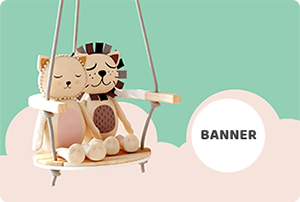
Helping Children Transition Between Classes
For some children, especially those with Autism Spectrum Disorder (ASD), the hardest part of the school day is transitioning between classes. Children experience less anxiety with consistent, predictable routines so any change or shift in schedule can elicit a fight or flight response. For many other kids, the difficulty in transitions can also be due to challenges in terminating or ending an activity while initiating a new one, especially when the former one is more pleasurable for the child such as going back to class after lunchtime.
When children are not provided with support when experiencing challenges in transitioning skills, it can lead to unsafe behaviors in the hallway and/or a difficult time focusing on the next activity at hand.
As a school-based Occupational Therapist, I not only help children reach their full potential in the classroom setting but also help them combat any challenges throughout the school day. Here are some ways to help your child or student transition better in the hallways:
Fun Games: Play Ispy in the hallway or ask questions about their surroundings (ex. did you notice the blue and green border on that bulletin board?) This serves as a great distraction tool for the child in addition to making the activity of transitioning to the next class more enjoyable.
A Transition Item/Toy: Allow the child to hold on to a special item/toy that they’re given only while transitioning in the hall. Be sure to let them know that they will have to return the item until it’s time to transitioning to the next class. This ‘transition item’ makes the activity of transitioning something a child can look forward to. It also provides predictability and comfort in the transitioning process.
Engage in a Scavenger Hunt: Have the child participate in a scavenger hunt where the child has to locate items on their way to the next classroom. This is another great distraction tool that is easy and fun to engage in. Look for a yellow construction paper, the fire extinguisher , the letter ‘E’, etc.
Sing a Song or say a Chant/Catchy Phrase:
“I give myself a great big hug standing straight and tall my eyes are right in front of me. I’m ready for the hall with a bubble in my mouth.”
“Marshmallow mouths and toes. Marshmallow mouths and toes. Quietly in the hallway everyone goes, with marshmallow mouths and marshmallow toes.”
(examples taken from Kindergartenwork.com).
Animal Walks Between Rooms: Animal walks are especially great for our sensory seekers who need movement and deep pressure to feel grounded and ready to learn. When it is safe to do so, have the child engage in animal walks such as frog jumps, bear walks or even crab crawls while transitioning to the next class. The deep pressure that animal walks provide in the joints elicit a calming effect for children who need sensory input to feel regulated.
Complete a Short Puzzle: For those kids who enjoy completing puzzles, pick out a quick 5-10 piece puzzle (depending on how far the next classroom is). The child can even pick out the puzzle from a choice of two short puzzles. Have the child start the puzzle in the first room and disperse the remaining puzzle pieces in the hallway. The last puzzle piece should be in their next classroom, possibly on their seat or desk to make the transition of getting seated easier.
Create a Behavioral Chart: A behavioral chart with prizes for every time the child transitions with appropriate behaviors is a great way to promote positive behaviors in school. For those kids who are having greater challenges in transitioning, break up the task into smaller achievable tasks that each earn their own small reward. For example, give the child a check or sticker for ending the first activity, lining up at the door, walking safely in the hall and getting seated in the next class.
First – Then Chart: Many of our children with ASD are visual learners so providing them with a visual as to what behaviors are expected of them can promote compliance. A ‘First-Then’ chart, in particular, is a simple visual that lets the child know what they’re expected to do first and what predictable outcome will happen afterwards. An example of a First-Then chart can say ‘First we walk to our class, Then you’ll get a snack’.
Create a Social Story: Social stories are a great way to illustrate and discuss appropriate social behaviors, such as walking in the school hallway. Customize it to fit the student’s specific needs and behaviors to make it relatable to them. Check out our social stories tab for the topics we have written about so far. A social story on transitioning in the hallway is soon to follow.
Hallway Buddy – Partner the child up with someone in the class who can demonstrate appropriate hallway behaviors. Children often look to their peers for support and behaviors that they can model.
Hallway Task – While transitioning between classes, give the child an important task (ex. we need to send a message to so and so; Are you able to hold my important folder/notebook to the next class?”
Hallway Monitor – On a similar note, give the student an important role in the hallway (ie. door monitor, indoor voice reminder, etc). Giving the student a responsible role shows them that their involvement is needed for a smooth transition in the hallway for the entire class
Leave comments/suggestions on what works best for your students in the hallway in the comment box below. You can also reach us at madeha.ayub@seedsforspecialneeds.com. See you in our next post!



